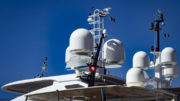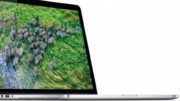Take a look at this antique. Any physical resemblance to the device you’re using to read this article is… highly surprising.

This old beige box may not have been the first device to use the term “Personal Computer” but it was the one that cemented the term “PC” in people’s minds, a term we still use today almost 40 years later. However, you may not realize that for quite some time, the term “personal computer” was in competition with the term “desktop computer.” No one knew which one was really going to win out, until IBM dropped the bomb with its 5150 Personal Computer in 1981.
In fact, in the days before laptops, a “desktop” computer seemed like a fable just by itself. The idea that everything you’d need for computing would fit on a desk, and that it wouldn’t be so heavy that it broke the desk, was the stuff of science fiction at one time. Even “microcomputers” of the 1970s often required so many accessories that only the largest and sturdiest desk could contain them.
There were other terms, too

In 1972, Alan Kay described the device above. It may look to you like a tablet with a keyboard, like an old Kindle, or just like a laptop with the hinge all the way open. Dr. Kay was the first to describe what he referred to as a “Dynabook,” which was a portable device with long battery life, a wireless connection, and a simple way of interacting with it. Keep in mind that this was nearly four decades before the iPad became reality.
For several years, it was popular to describe any portable computing device as a Dynabook, but that term fell out of fashion. Toshiba actually used it for a while, but dropped it when giving laptops cute names stopped helping them sell.
The winner: Personal Computer
Eventually “Personal Computer” won out as the preferred term, but “desktop” came back as a sort of retronym just a few years later when laptops started coming on the scene, and is still used today. I recently found a 2017 article on Gizmodo about it. It’s a fun little essay on the term “desk top computer,” tracing it back to 1958 at least in theory, since it was barely even possible to have even a desktop calculator back in those days.
One thing is pretty clear that if you look at the last 50 years in our lives. It’s super-obvious that the biggest changes in our society have all been driven by computerization. In 1967, a computer was a large, special-purpose device hidden in an air-conditioned room and staffed by specialists. Today, we are surrounded by computers. They are so common and so ubiquitous that we don’t even realize they’re everywhere. They are part of our home appliances, our communications devices, and even our watches.
There have been such massive changes brought on by computerization in 50 years. It’s been faster in the last ten since the introduction of the internet-connected smart phone,. Just imagine what the next 50 will bring!





